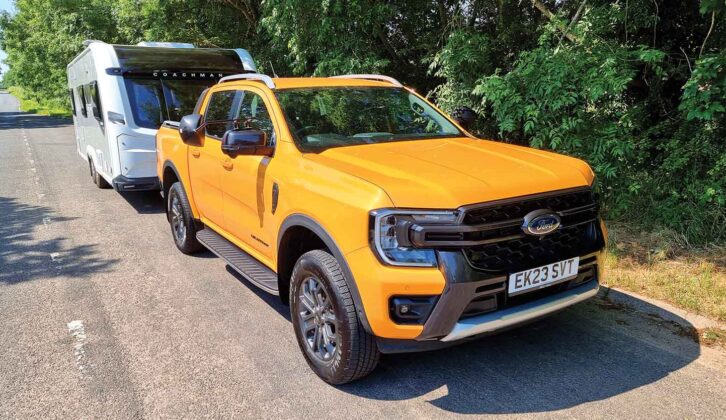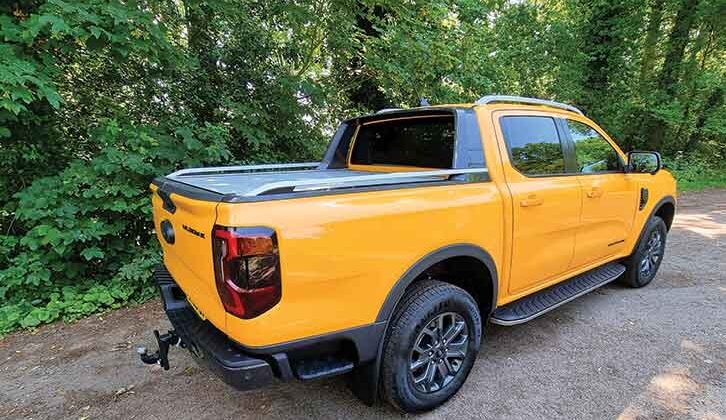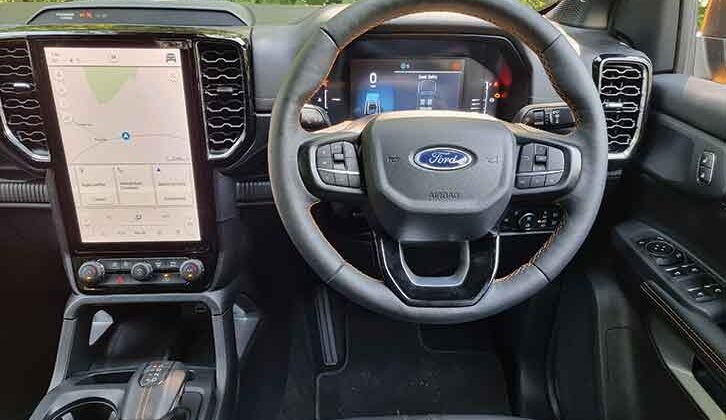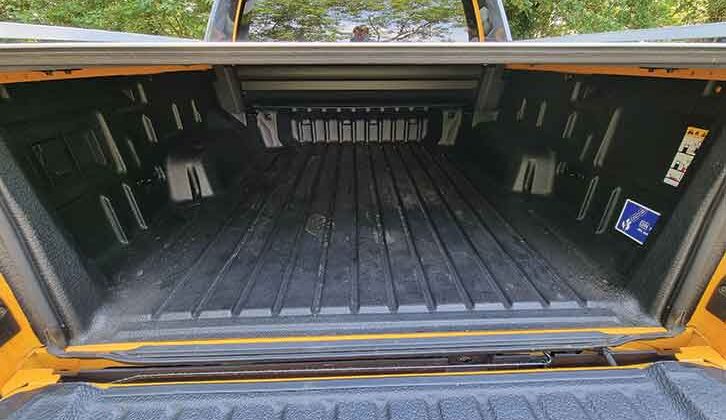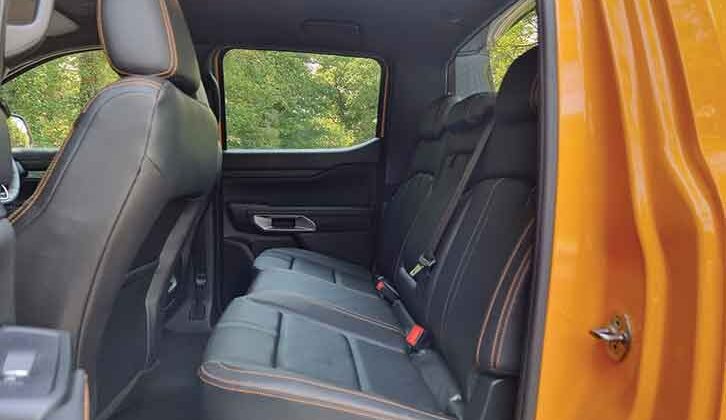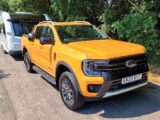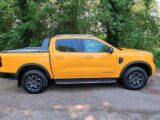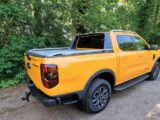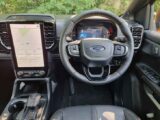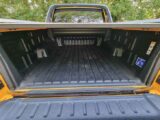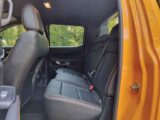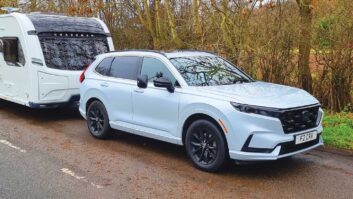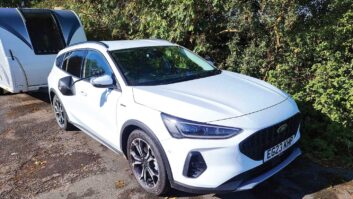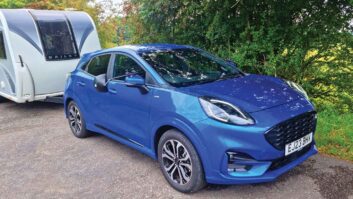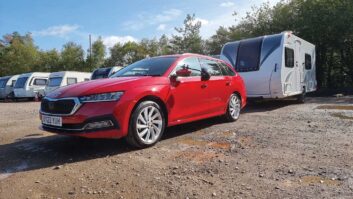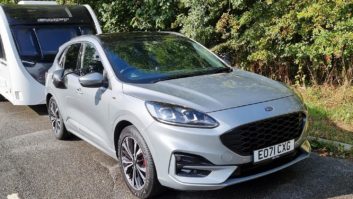The Ford Ranger has been developed in tandem with the new Volkswagen Amarok. We’ve yet to drive the VW, but the Ford Ranger 2.0 TDCi Wildtrak Double Cab Auto promises more space, improved technology and greater safety than before.
What are we looking for?
Double cab pick-ups must work well as commercial vehicles and family cars. Add touring to the mix and the Ranger needs to fulfil wide-ranging demands if it is to be considered in the discussion for the best caravan tow car.
Towing ability of the Ford Ranger 2.0 TDCi Wildtrak Double Cab Auto
This is one of the bigger pick-ups for towing on the road, well over 5m long and weighing over 2.2 tonnes. Ford quotes a maximum towing figure of 3500kg, although this drops to 3220kg when the Ranger is fully loaded. That’s largely academic if you plan to tow a caravan, as the 85% match figure of 1907kg means most vans are sensible matches.
We paired the Ranger with a Coachman Laser 620 Xtra with a MiRO of 1725kg.
Towing in rear-wheel drive, we found the Ranger tended to spin the rear wheels when pulling away briskly. But it’s easy enough to switch to high-ratio four-wheel drive, which makes for fuss-free getaways.
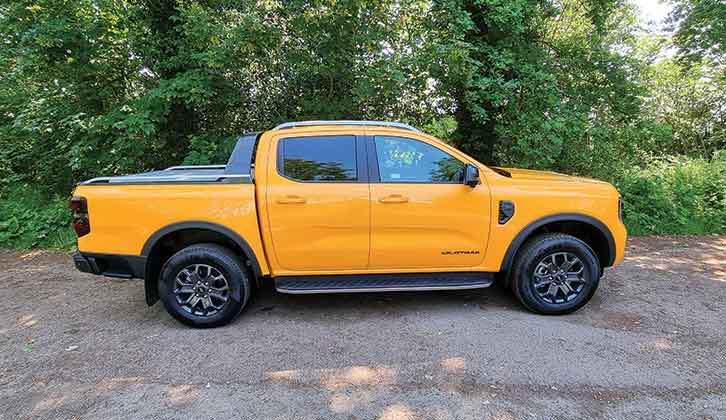
With 369lb ft of torque, the 2.0-litre diesel has lots of muscle to pull a heavy caravan. It may not be the quietest engine, but it gets the job done. You can easily tow a heavyweight such as the Coachman at the caravan speed limit of up to 60mph before you reach the end of the motorway slip road.
Once up to speed, the Ranger is mostly stable, but the back does bobble from side to side a bit more than the best large SUVs if the wind is gusty or while overtaking an HGV. The towball is a long way from the rear axle, giving the van extra leverage.
Steering corrections are rarely needed, but you don’t have the same solid, secure feeling you expect from a similarly heavy passenger car. Perhaps some weight in the load bed would help the Ranger feel more settled at speed.
On country roads, it tows confidently. At 2.21m wide including mirrors, it rather fills the road, but this can be a positive when towing an 8ft-wide caravan like the Coachman. You still enjoy a clear view a long way behind in the caravan towing mirrors and it’s easier to judge the van’s width.
Hill starts are easy. On a dry 1-in-10 slope, we had no need to switch from two- to four-wheel drive. The Ranger towed up the hill with no wheelspin, and it’s reassuring to know four-wheel drive is there if needed.
Solo driving
Everyday driving doesn’t show pick-ups in the best light. A vehicle that’s designed to carry over a tonne is usually uncomfortable when there’s hardly any weight in the load bed and just a few passengers. But driving the Ranger largely belies these negative expectations. Despite the heavy-duty leaf-spring rear suspension, the ride is surprisingly comfortable, with much less bouncing around than you could experience in most pick-ups.
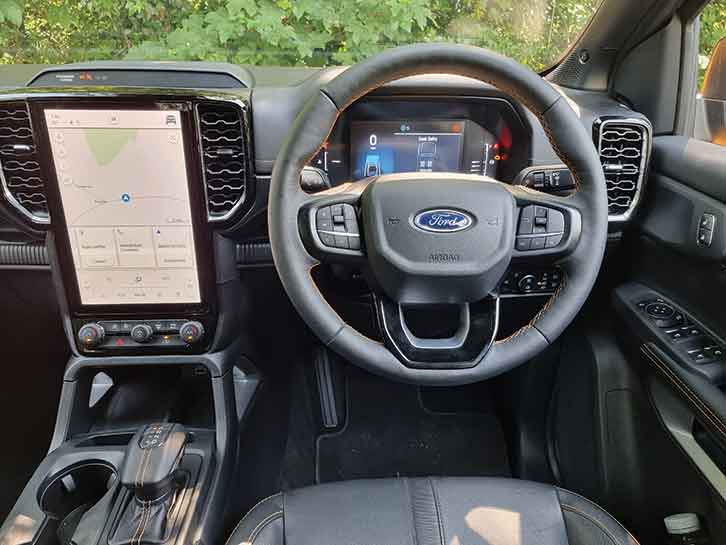
It’s not as comfortable as a really good SUV, but then, your average family SUV won’t carry a tonne of cement in the back during the working week.
The Ranger handles neatly on country roads, too, with precise steering and less body roll than you find in most rivals.
That said, this is a big vehicle – very big – and it can be intimidating to drive on a very narrow road. The high driving position and good forward visibility do help. The sheer size can also be an issue around town. Parallel parking needs a large space, and you’re always conscious of its dimensions.
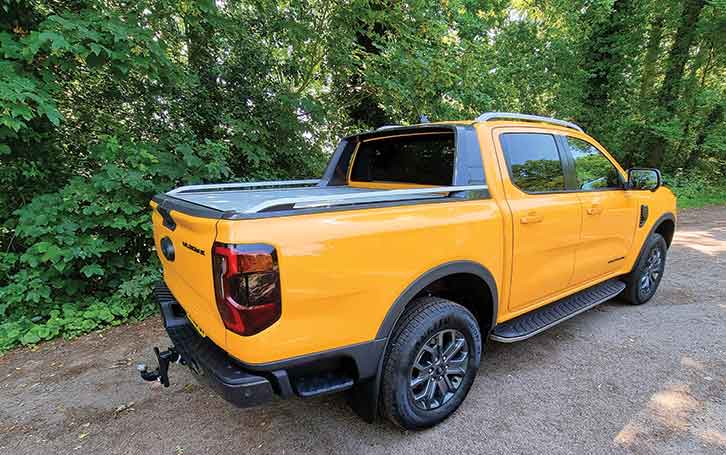
Around town or on the open road, the 10-speed gearbox shifts smoothly, and the diesel has enough punch to provide for confident overtaking.
Practicality
From Monday to Friday, passenger space comes second to load space in a pick-up. The Ranger’s load bed is big enough for a pallet, and the payload over the one-tonne threshold that keeps HMRC content if you run the Ranger through your business and reclaim the VAT portion of the price.
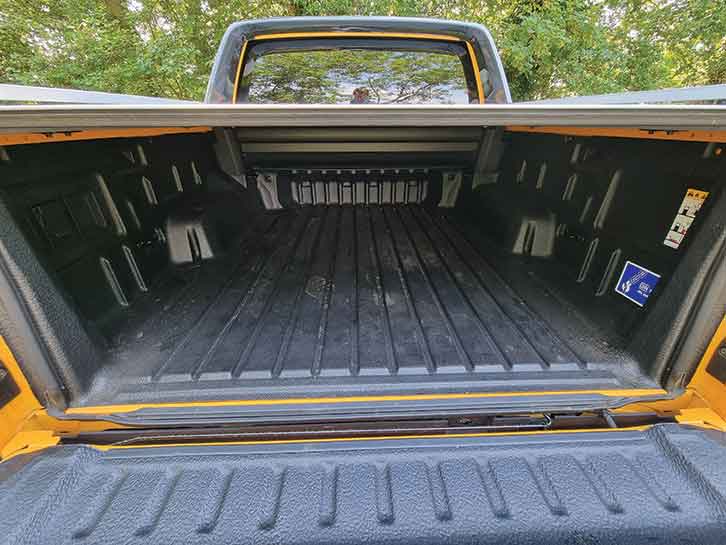
Your workmates will be happy you chose the Ranger. There’s enough space for adults in the back, and the air vents between the front seats will keep everyone cool. Come the weekend, ISOFIX mounting points on either side offer easy fitting for child seats.
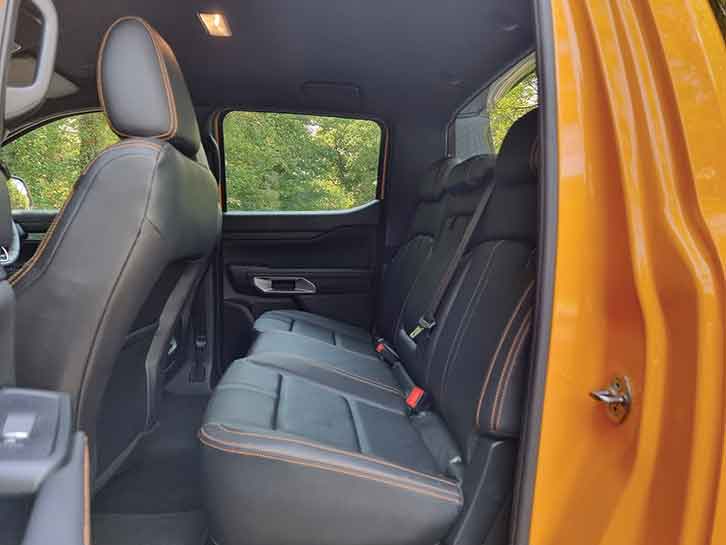
Both driver and front-seat passenger have plenty of head- and legroom. With a broad range of adjustment for the seat and wheel, finding a comfortable driving position should be straightforward.
There are some cheap-looking plastics, but this is a commercial vehicle, not a luxury car. It feels solidly screwed together and the portrait-oriented infotainment screen is a cut above what we’re used to seeing in a pick-up truck.
Buying and owning
The Ranger doesn’t match a SsangYong Musso for value. While the Ranger starts at £33,060 (including VAT), the Musso costs as little as £30,093. Wildtrak spec is close to the mid-range, and with the 205hp engine it costs £47,220. If you can reclaim the VAT, that drops to £40,221.36.
The Ranger returns 32.1mpg, according to WLTP tests. We broadly matched that in normal driving and were impressed with the 25mpg achieved on our towing route.
Verdict
For private buyers, we’d recommend a conventional passenger car unless you are dead-set on owning a pick-up. For someone who needs a pick-up on business, the new Ford has reinforced the Ranger’s position as one of the class leaders. Just check if your van warranty excludes towing with a commercial vehicle before you decide.
Or you could try:
- Škoda Enyaq Coupé iV vRS: this sporty option is ideal for solo driving and if you own a smaller tourer.
- Audi A6 Avant 50 TFSI e Quattro S Line Tiptronic: this is an excellent tow car, offering great boot space and a roomy cabin.
- Nissan X-Trail e-4orce Tekna: practical and comfortable solo drive, the e-4orce Tekna is a thoughtfully designed and well-built vehicle.
Technical spec of the Ford Ranger 2.0 TDCi Wildtrak Double Cab Auto
- Price: £47,220
- What Car? Target Price: N/A
- Retained value after three years: N/A
- Kerbweight: 2243kg
- 85% of kerbweight: 1907kg
- Gross vehicle weight: 3280kg
- Max towing limit: 3500kg
- Gross train weight: 6500kg
- Towball limit: 350kg
- Price of tow ball and electrics: £480 (prep only)
- Loadspace length/height/width: 1564/511/1584mm
- Payload: 1037kg
- Test conditions: Dry
- Engine size: 1996cc
- Power (hp)/rpm: 205@3750
- Torque (lb ft)/rpm: 369@1750-2000
- Official combined economy: 32.1mpg
- Towing economy: 25mpg
- CO2 emissions: 230g/km
- First year car tax: £320
- Second year car tax: £320
- Insurance group: 42E
- Euro NCAP rating: 5/5
If you’ve enjoyed reading this article, why not get the latest news, reviews and features delivered direct to your door or inbox every month. Take advantage of our brilliant Practical Caravan magazine SUBSCRIBERS’ OFFER and SIGN UP TO OUR NEWSLETTER for regular weekly updates on all things caravan related.
Technical Specifications
| Engine Size | 1996 cc |
| Kerbweight | 2243 kg |
| 85% KW | 1907 kg |
| Towball Limit | 350 kg |
| Maximum Towing Limit | 3500 kg |
| Power | 205 bhp |
| Torque | 369 lb ft |
| Offical MPG | 32.1 mpg |
| Towing MPG | 25 mpg |
| CO₂ | 230 g/km |
